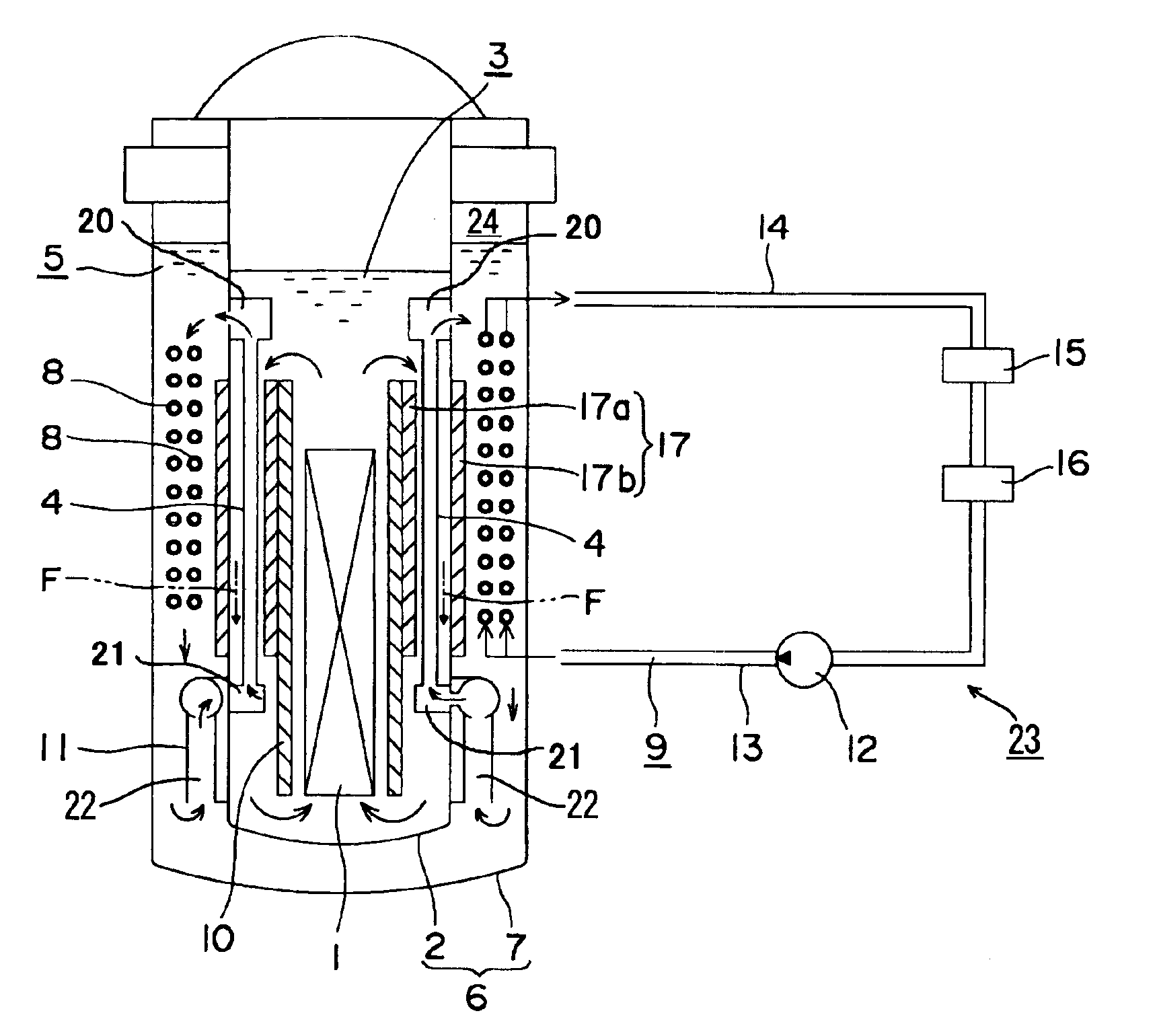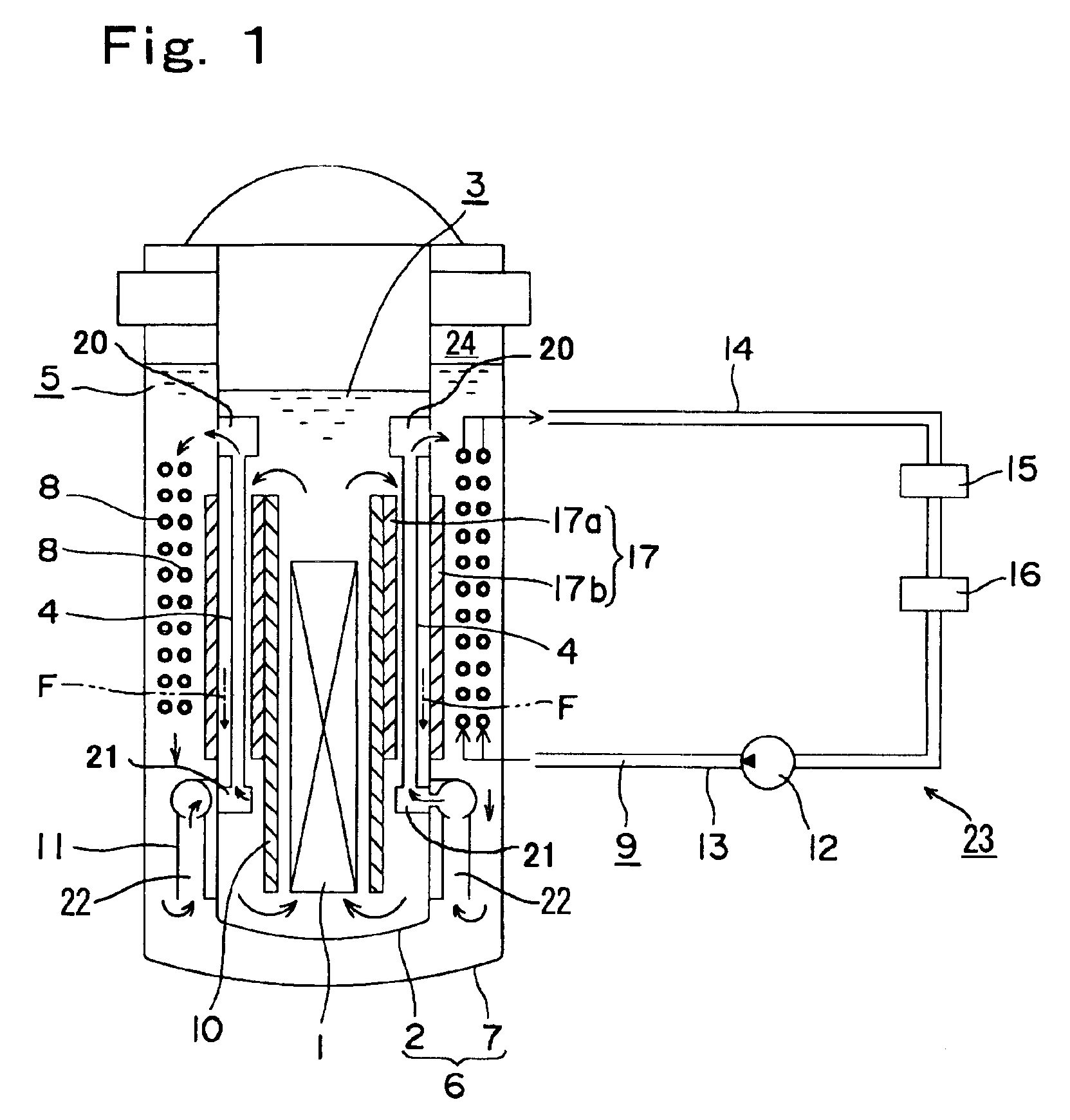Nuclear reactor
a nuclear reactor and reactor technology, applied in nuclear reactors, nuclear elements, greenhouse gas reduction, etc., can solve the problems of increasing increasing the number of pipes, pumps, heat exchangers or steam generators, and complication or increase in the size of the cooling system, so as to facilitate convection and efficient conversion
- Summary
- Abstract
- Description
- Claims
- Application Information
AI Technical Summary
Benefits of technology
Problems solved by technology
Method used
Image
Examples
first embodiment
[0023]FIG. 1 shows a nuclear reactor according to the present invention. This nuclear reactor includes: a reactor vessel 2 which integrates therein a reactor core 1; a first coolant 3 which is stored in the reactor vessel 2, and heated by the reactor core 1 to convect; a first heat transfer tube 4 which is arranged in the reactor vessel 2 and comes into contact with the first coolant 3; and a second coolant 5 which is supplied from the outside of the reactor vessel 2 to the first heat transfer tube 4, cools the first coolant 3 and led to the outside of the reactor vessel 2. The reactor vessel 2 is an inner vessel of a double vessel 6 (which will be referred to as an inner vessel 2 in this embodiment), the first coolant 3 is a primary coolant (which will be referred to as a primary coolant 3), and the second coolant 5 is a secondary coolant (which will be referred to as a secondary coolant 5 in this embodiment) which is stored between an outer vessel 7 and the inner vessel 2 of the d...
second embodiment
[0039]the nuclear reactor according to the present invention will now be described with reference to FIG. 3. It is to be noted that like reference numerals denote the same constituent elements as those in the nuclear reactor shown in FIG. 1.
[0040]A cooling system of this nuclear reactor is constituted of a primary coolant system and a water / steam system 23 which flows through heat transfer tubes 4 running in a reactor vessel 2 and removes heat of a primary coolant. That is, the nuclear reactor includes: a reactor vessel 2 which integrates therein a reactor core 1; a first coolant 3 which is stored in the reactor vessel 2, heated by the reactor core 1 to convect; a heat transfer tube 4 which is arranged in the reactor vessel 2 and comes into contact with the first coolant 3; and a second coolant 5 which is supplied from the outside of the reactor vessel 2 to the heat transfer tube 4, cools the first coolant 3 and led to the outside of the reactor vessel 2. The first coolant 3 is a pr...
PUM
 Login to View More
Login to View More Abstract
Description
Claims
Application Information
 Login to View More
Login to View More - R&D
- Intellectual Property
- Life Sciences
- Materials
- Tech Scout
- Unparalleled Data Quality
- Higher Quality Content
- 60% Fewer Hallucinations
Browse by: Latest US Patents, China's latest patents, Technical Efficacy Thesaurus, Application Domain, Technology Topic, Popular Technical Reports.
© 2025 PatSnap. All rights reserved.Legal|Privacy policy|Modern Slavery Act Transparency Statement|Sitemap|About US| Contact US: help@patsnap.com



